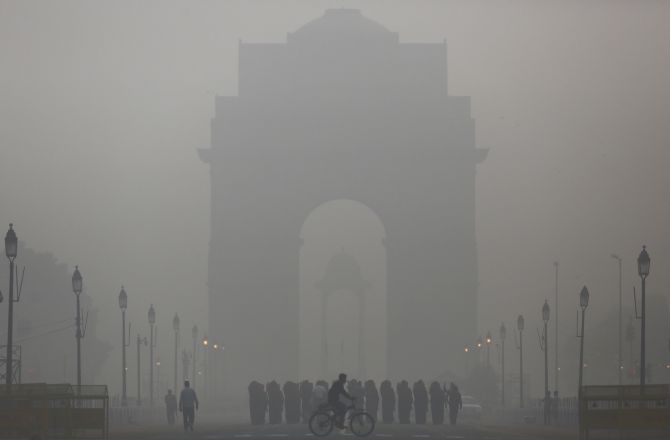 | « Back to article | Print this article |
 The residents of Delhi can look forward to usher in the New Year with a relatively better air quality that is expected to be 'moderate' to 'very poor', largely due to favourable weather conditions.
The residents of Delhi can look forward to usher in the New Year with a relatively better air quality that is expected to be 'moderate' to 'very poor', largely due to favourable weather conditions.
The news may come as a relief to the Delhi government, whose odd-even traffic rule is set to be rolled out from January 1. Lesser cars on road, coupled with such weather conditions, will hopefully lessen pollution considerably.
The System of Air Quality and Weather Forecasting and Research has forecast that suspended particulate matter, PM10, would touch a 'new low' of the season in the next three days and settle in the moderate category.
The average quantity of PM 2.5, tinier and deadlier particles, will be around 140 micrograms per cubic metre, which, until recently, would have been considered as 'poor'.
"But the Centre has recently revised the parameters. Under it the very poor category now ranges from 120 to 250 micrograms per cubic metre," SAFAR’s project director Gufran Beig said.
Beig said the new guidelines make Indian regulations 'more stringent' than World Health Organisation's as far as the transition from 'poor' to 'very poor' is concerned.
"As per US regulations and WHO, air is very poor when particulate matters exceed 150 micrograms per cubic metre, so that makes Delhi's air quality poor," Beig said.
Beig said the favourable weather conditions would be in the form of higher temperature, cleaner and lighter winds, less humidity and moderate moisture levels.
The safe limits of PM 2.5 and PM 10, tiny particles that can embed themselves deep in the lungs and enter the bloodstream, are 60 and 100 respectively. PM 2.5 remained the lead pollutant in Delhi for the past two months.
PM 2.5 forecast for December 30, 31 and January 1 are 132, 139 and 152 respectively. It was 136 micrograms per cubic metre on Tuesday. PM 10 would be between 220-240 on the eve of New Year, SAFAR said.
On December 23, the averages of PM 2.5 and PM 10 were at 295 and 470 micrograms per cubic metre respectively, making it the most polluted day of the year, a rise attributed mainly to influx of pollutants from the Indo-Gangetic plains region.
However, SAFAR maintained that its forecast is based on expected weather and background emissions, which do not take into account any possible deviations due to the odd-even formula.